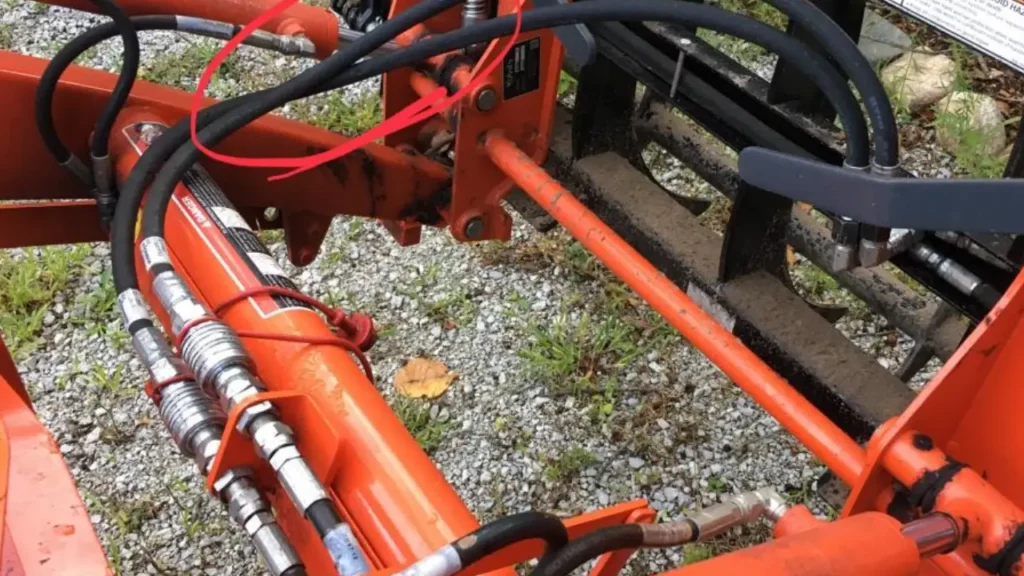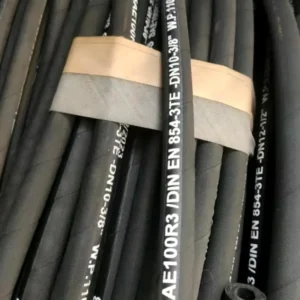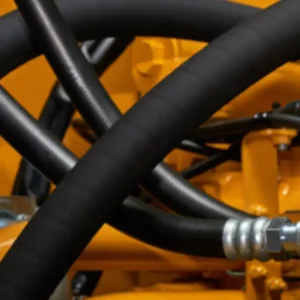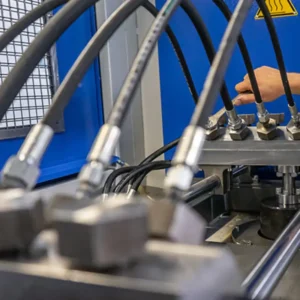Hydraulic hoses are essential components in many industrial and mobile equipment applications. However, they are susceptible to damage, particularly pinching, which can lead to leaks, reduced performance, and even catastrophic failures.
In this blog post, we will explore the common causes of hose pinching, the potential consequences, and most importantly, effective prevention strategies to keep your hydraulic hoses safe and operational.
Risks of Pinched Hydraulic Hoses
Pinched hydraulic hoses pose significant risks to both equipment and personnel. Here are some of the potential consequences:
1. Hydraulic Fluid Leaks:
- System Failure: A pinched hose can cause a leak, leading to a loss of hydraulic fluid and compromising the system’s ability to function.
- Contamination: Leaked hydraulic fluid can contaminate the work environment, posing health and safety risks.
2. Hose Damage:
- Structural Integrity: Constant pinching can weaken the hose’s structural integrity, making it more susceptible to failure.
- Reduced Lifespan: Pinching can accelerate the aging process of the hose, leading to premature failure.
3. Equipment Damage:
- Malfunction: A pinched hose can cause erratic equipment operation, leading to reduced efficiency and potential damage to other components.
- Catastrophic Failure: In severe cases, a pinched hose can burst, causing significant damage to the equipment and potentially injuring personnel.
4. Personal Injury:
- High-Pressure Fluid Injection: Pinched hoses can release high-pressure fluid with considerable force, potentially causing serious injuries.
- Electrical Shock: If hydraulic fluid comes into contact with electrical components, it can lead to electrical shock.
To mitigate these risks, it’s crucial to implement preventive measures, such as proper hose routing, regular inspections, and using protective covers or guards to prevent pinching.
How to Keep Hydraulic Hoses From Getting Pinched

To ensure the longevity and optimal performance of your hydraulic system, it’s crucial to implement effective strategies to prevent hydraulic hose pinching.
1. Proper Hose Routing
- Avoid Sharp Bends: Excessive bending can weaken the hose’s structure, leading to premature failure. Maintain a gentle curve to minimize stress on the hose.
- Secure Routing: Use hose clamps or straps to secure the hose to the equipment, preventing it from moving and getting caught on sharp edges or other components.
- Sufficient Clearance: Ensure there is adequate clearance between the hose and other components to minimize the risk of pinching. Avoid routing hoses near moving parts or areas with high vibration.
2. Regular Inspections
- Visual Inspection: Conduct regular visual inspections to identify any signs of wear, damage, cracks, or cuts on the hose.
- Fluid Leaks: Monitor for any leaks, which may indicate a potential pinch point or internal damage.
- Protective Covers: Inspect the protective covers or guards to ensure they are in good condition and properly secured. Replace any damaged or worn-out covers.
3. Protective Covers and Guards
- Custom-Made Covers: Use custom-made covers specifically designed to protect hoses in high-risk areas, such as those exposed to extreme temperatures, chemicals, or physical impact.
- Cable Ties: Secure hoses to fixed points using cable ties to prevent movement and reduce the risk of pinching.
- Trunking: Enclose hoses in protective trunking to shield them from damage, debris, and accidental impact.
4. Temperature Management
- Heat Protection: Use heat-resistant materials or coatings to protect hoses from high temperatures. Avoid routing hoses near heat sources like engines or exhaust systems.
- Cold Weather Protection: Consider using insulated hoses or protective coverings in cold environments to prevent the hose from becoming stiff and brittle, making it more susceptible to damage.
5. Proper Installation
- Qualified Technicians: Ensure that hydraulic hoses are installed by qualified technicians who understand the importance of proper routing and securing.
- Manufacturer‘s Guidelines: Adhere to the manufacturer‘s guidelines for installation, including bending radii, support intervals, and fitting torque specifications.
- Avoid Overtightening: Overtightening fittings can damage the hose and increase the risk of leaks.
By implementing these preventive measures and conducting regular inspections, you can significantly reduce the risk of pinched hydraulic hoses, ensuring the safety, reliability, and efficiency of your hydraulic system.
Conclusion
Preventing pinched hydraulic hoses is crucial for ensuring the longevity and optimal performance of your hydraulic system. By following the tips outlined in this blog post, you can significantly reduce the risk of hose damage and costly repairs.
Remember to regularly inspect your hoses for signs of wear and tear, maintain proper routing and support, and address any potential pinch points promptly.
Call to Action
Protect your hydraulic system and streamline your operations with high-quality, durable hydraulic hoses. Contact us today to explore our extensive range of wholesale hydraulic hose solutions. Let us help you optimize your system’s efficiency and reliability.




